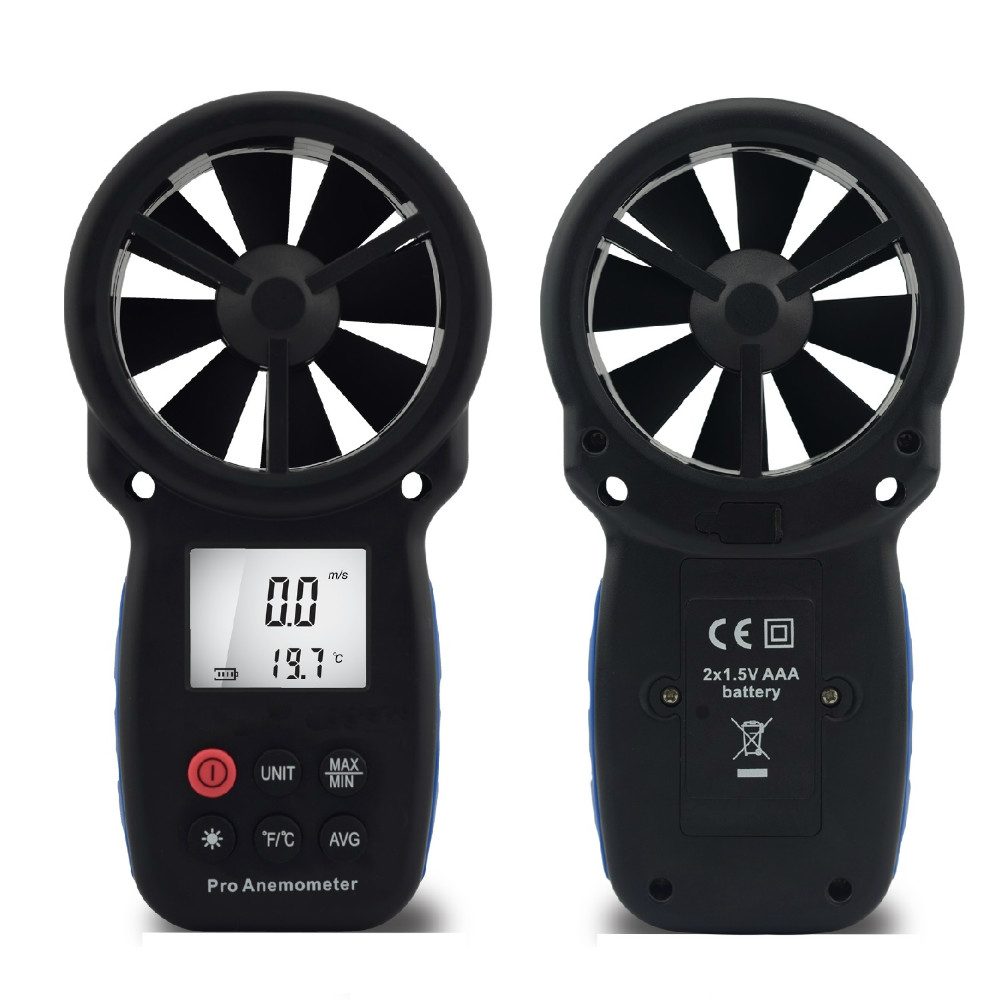Why an Anemometer is Essential for Your Environmental Data Collection
Why an Anemometer is Essential for Your Environmental Data Collection
Blog Article
Anemometers Revealed: Recognizing Their Importance in Environmental Surveillance and Precaution
The role of anemometers in ecological surveillance and safety and security procedures is frequently taken too lightly, yet their significance is undeniable. These tools have a lengthy history rooted in clinical query and technical innovations, developing to end up being crucial tools in various areas. From weather forecasting to air travel security, anemometers play an important duty in supplying precise information that informs decision-making procedures and enhances general safety and security. Recognizing the intricacies of anemometers unveils a globe of critical insights that are essential to our understanding of the atmosphere and the procedures we take to ensure security.
History of Anemometers
The evolution of anemometers can be mapped back to the ancient civilizations where rudimentary wind determining tools were initial utilized. One of the earliest well-known anemometers was the hemispherical cup anemometer developed by Leon Battista Alberti in the 15th century.
In the 18th century, the distinguished scientist John Thomas Romney Robinson introduced the Robinson anemometer, which featured four hemispherical mugs installed on horizontal arms that prolonged from a main axis. This design became a requirement in atmospheric dimensions because of its accuracy and reliability. Over the years, improvements in modern technology brought about the development of more modern-day anemometers, consisting of ultrasonic anemometers and laser Doppler anemometers, providing raised precision and performance in measuring wind speed and direction. The background of anemometers showcases a remarkable journey of development and development in the field of meteorology.
Kinds Of Anemometers
Throughout the area of meteorology, different types of anemometers have actually been established to precisely measure wind rate and direction. Sonic anemometers utilize ultrasonic signals to measure wind speed and instructions precisely. Hot-wire anemometers operate based on the principle that the cooling effect of wind on a warmed cord is symmetrical to the wind rate.
Applications in Weather Forecasting
Having actually reviewed the numerous sorts of anemometers made use of in weather forecasting for gauging wind speed and instructions, it is vital to discover their sensible applications in the field. Anemometers play a crucial role in meteorology by giving real-time and accurate data on wind conditions (anemometer). Meteorologists use anemometers to monitor wind speed and direction to anticipate weather condition patterns, problem warnings for serious weather condition events like tornadoes, storms, and tornados, and assess atmospheric problems for aeronautics safety
In weather forecasting, anemometers aid in comprehending local and neighborhood wind patterns, which are important for anticipating climate changes and identifying weather trends. These devices are additionally utilized in study to research microclimates, metropolitan warm islands, and air contamination diffusion. In addition, anemometers are used in farming to enhance crop monitoring techniques, such as watering and pesticide application, based upon wind problems.
Importance in Air Travel Safety And Security
An integral facet of making sure aviation security hinges on the meticulous surveillance of wind problems using anemometers. Anemometers play a crucial function in aviation by giving real-time look these up data on wind rate and direction, aiding pilots in making notified choices throughout trip, landing, and take-off. Unpredictable and strong winds can dramatically influence airplane procedures, making it crucial for aviation authorities to depend on accurate wind dimensions to make sure the safety of guests and team.

In the vibrant atmosphere of air travel, where even small adjustments in wind speed and direction can have profound results, anemometers stand as essential tools for advertising safe and secure and safe air traveling.
Function in Environmental Research
Exactly how do anemometers add to improvements in environmental study? Anemometers play an important duty in ecological research study by providing necessary data on wind rate and direction. This info is important for comprehending various atmospheric procedures, such as air pollution diffusion, weather patterns, and environment change. By accurately gauging wind qualities, anemometers assist researchers analyze the movement of contaminants in the air, assess the effect of industrial exhausts, and forecast the spread of contaminants in the environment.


Final Thought
In verdict, anemometers have played a crucial duty in environmental tracking and safety actions. Comprehending the significance of anemometers is crucial for precisely measuring wind rate and direction, which is essential for anticipating climate patterns, making sure safe air travel operations, and carrying out environmental research studies.
One of the earliest known anemometers was the hemispherical mug anemometer invented by Leon Battista Alberti in the 15th century. Over the years, innovations in technology led to the growth of more contemporary anemometers, consisting of ultrasonic anemometers and laser Doppler anemometers, providing raised precision and performance in measuring wind speed and instructions. Hot-wire anemometers operate useful site based on the principle that the cooling result of wind on a heated cable is symmetrical to the wind speed. Meteorologists utilize anemometers to check wind speed and direction to anticipate weather patterns, issue cautions for extreme weather events like cyclones, storms, and hurricanes, and evaluate climatic problems for aviation safety and security.
Comprehending the value of anemometers is necessary for properly gauging wind speed and direction, which is important for anticipating weather condition patterns, making certain secure aeronautics procedures, and performing ecological studies. (anemometer)
Report this page